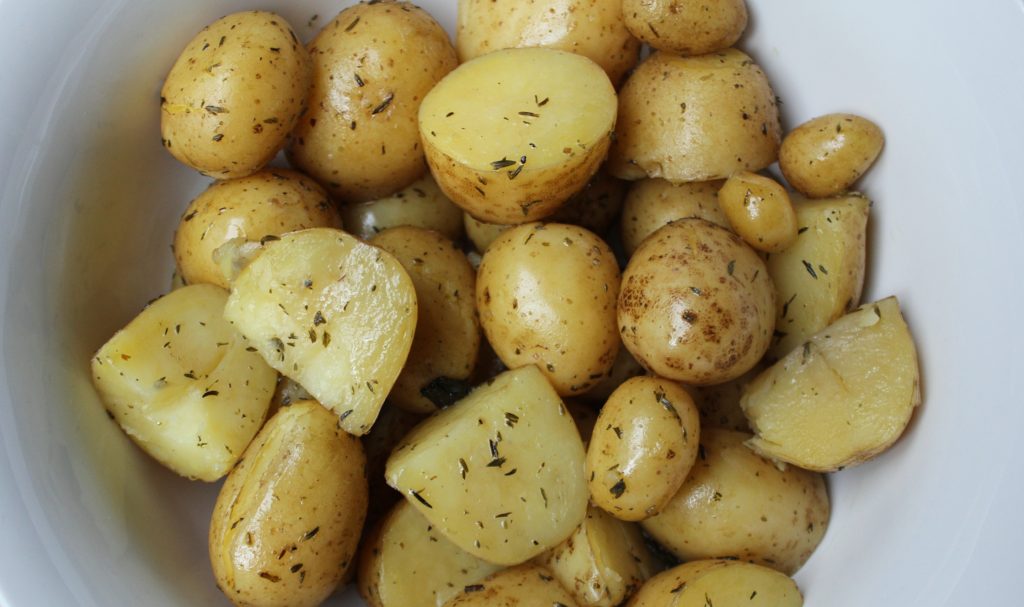One of the stars of the garden this year was the humble spud. To a British lass, there’s nothing more comforting than a roasted spud covered in butter, thyme and sage, evoking memories of lazy, English weekends. The erratic tones of English football commentary on the television was only interrupted by the occasional hissing and spitting of a Sunday roast in the oven, the smell of which saw us salivating slowly over the course or four of five hours. This year, we have more than we know what to do with, so will be trying to think up ways to cook this essential vegetable. As a much-maligned carbohydrate, the modern potato has a bad reputation and the term “couch potato” further conjures up negative connotations, but this vegetable is actually very nutritious. They have Vitamin B & C, thiamin, folate, phosphorus, potassium, magnesium and small amounts of iron, calcium, zinc and copper. Potatoes are the easiest vegetables to cultivate, especially if you don’t have a lot of room to spare.
Last year, we published easy instructions on how to grow your own spuds, which we republish here. To have your own potato bucket which produces year-round potatoes in the kitchen or outside, simply:
1. Drill three or four holes in the bottom of a bucket, about half the size of a garbage pail;
2. Line the bottom of the bucket with a three-inch layer of rocks for drainage;
3. Add a six-inch layer of peat and compost on top of the rocks;
4. Throw in four organic, seed potatoes (anything other than organic will not grow spuds);
5. Cover with a two-inch layer of peat/potting soil mix and pat down.
Thyme & Sage Roasted Spuds
2-3 lbs of homegrown spuds (picture above)
1 Teaspoon of chopped, fresh sage
1 Teaspoon of dried thyme
1 Sprig of Rosemary
2 ounces of Irish, salted butter
Cut the larger spuds into quarters, smaller spuds into halves and leave the baby spuds whole. Rinse in water and toss with sage and thyme. Add the butter and cook on 390F for 50 minutes. Bring out of the oven periodically to baste the uncooked spuds in the butter.

I’m going to try this. When do you make the bucket and its contents?
The best time to plant is spring, and of course, summer, but if it’s an indoor bucket you may be able to start it any time. Just make sure you put a deep tray to catch all the water.